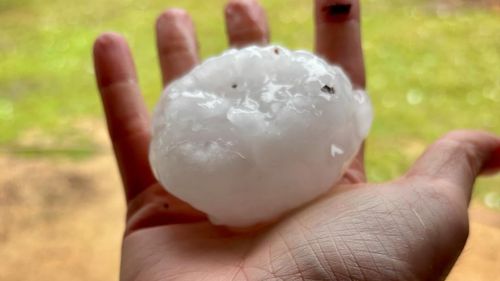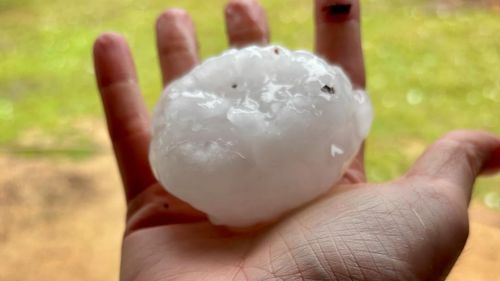Share this @internewscast.com
Millions of Australians in the country’s largest cities could be facing a future of giant, more intense hailstorms, according to a new study.
Sydney, Canberra, Melbourne, and Perth are all under threat, according to research conducted by the University of NSW’s Sydney’s Institute for Climate Risk and Response.
The study found that climate change could bring more damaging hailstorms as the globe heats up.

Despite being made of ice, hailstones rely on warmth for their formation.
During a thunderstorm, strong winds known as updrafts lift moisture high into the atmosphere, where it becomes frozen. These ice particles, referred to as ‘hail embryos,’ gather supercooled water as they move through the storm cloud.
To grow large hailstones, the storm cloud needs to be tall, with lots of energy to keep the stone suspended long enough to gather layers of ice.
While hail can fall anywhere in Australia, certain regions are particularly exposed.

Brazen robber behind $183 million diamond heist never caught
“The main region is the East Coast from a bit north of Brisbane to a bit south of Sydney,” Raupach said.
A significant concern regarding the increase in hail in such densely populated areas is the potential harm to solar panels. However, Raupach emphasized that this should not discourage investment in renewable energy.
“We should also think about how to strengthen our cities to resist hail damage, especially if hailstone size is increasing with climate change,” he said.
But in the meantime, Australians should become more acquainted with hail preparation.
“To be protected from hail you can move undercover, move your car undercover, have good insurance and have strong roof tiles,” Raupach said. He says some farmers use hail nets.
QBE Insurance’s Dr Joanna Aldridge, co-author of the study, warned that Australian building standards don’t include hail resistance.
This left many properties “vulnerable”, she said.
If Australians need to take steps in the short term, Raupach also urged long-term action, both to reduce greenhouse gas emissions and to further the study of future hail trends and how they could affect urban environments in particular.
“It’s very early days, but maybe one day we could design cities with a reduced storm risk,” he said.












